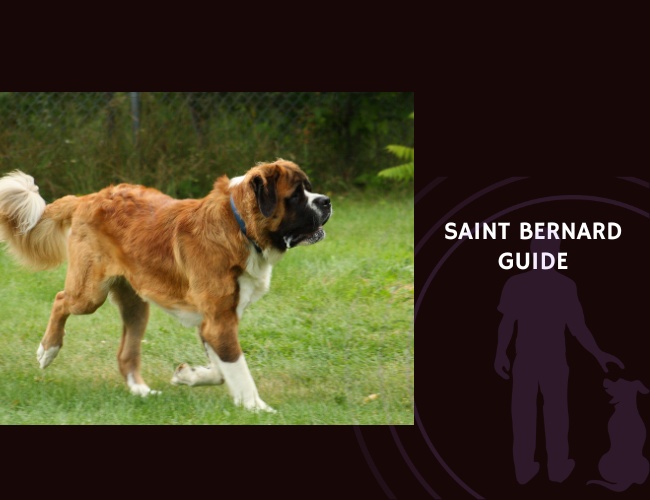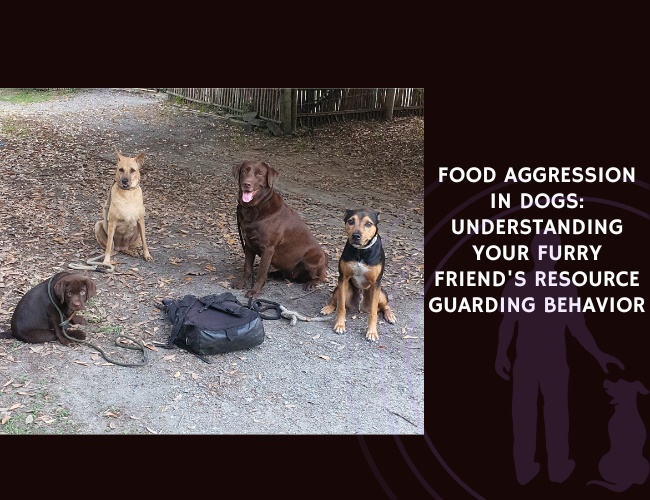Introduction
Picture a gentle giant padding through fresh Alpine snow, a small wooden barrel fastened to their collar—this iconic image of the Saint Bernard has captured hearts for centuries. But beyond the romanticized rescue dog of Swiss mountain passes lies a remarkably complex breed whose true nature extends far beyond their legendary status. These magnificent dogs, originally bred by monks at the Great St. Bernard Hospice, have evolved from their life-saving heritage into beloved family companions whose size is matched only by their capacity for love.
Did you know that Saint Bernards possess neurological adaptations that make them uniquely suited for both rescue work and family life? Their extraordinary combination of calm temperament, protective instincts, and emotional intelligence creates a dog that seems almost purpose-built for human companionship. In this comprehensive guide, we’ll explore every facet of Saint Bernard ownership—from understanding their gentle giant psychology to managing their specific health needs. Whether you’re considering welcoming one of these majestic dogs into your home or seeking to deepen your understanding of your current companion, let us guide you through the fascinating world of the Saint Bernard. 🐾
Character & Behavior
Understanding Your Gentle Giant’s Mind
The Saint Bernard’s reputation for gentleness isn’t just folklore—it’s rooted in fascinating neurohormonal differences that set them apart from other breeds. When you observe your Saint Bernard’s calm demeanor, you’re witnessing the results of elevated oxytocin and serotonin levels that research suggests may be naturally higher in this breed. This biological foundation creates what many owners describe as an almost zen-like presence in their homes.
Emotional Stability and the Saint Bernard Temperament
Your Saint Bernard’s emotional stability manifests in several distinctive ways. You might notice how they remain remarkably composed during household chaos—children playing loudly, visitors arriving, or even during thunderstorms that send other dogs hiding. This isn’t mere tolerance; it’s an active emotional regulation system at work. Their amygdala, the brain’s fear center, appears to process potential threats differently than more reactive breeds, allowing them to assess situations calmly before responding.
This emotional steadiness makes them exceptional therapy dogs and family companions. However, it’s important to understand that this calmness doesn’t mean they’re detached. Saint Bernards form deep, meaningful bonds with their families, often showing subtle signs of affection like gentle leaning, soft eye contact, and what owners affectionately call the “Saint Bernard sigh”—a contented exhale when settling near their favorite humans.
The Protective Instinct: Guardian Without Aggression
One of the most remarkable aspects of Saint Bernard behavior is their ability to be protective without being reactive. Unlike breeds bred specifically for guarding, Saint Bernards demonstrate what behaviorists call “thoughtful protection.” When a stranger approaches your home, you’ll likely observe your Saint Bernard positioning themselves between you and the potential threat, using their impressive size as a deterrent rather than displaying aggressive behaviors.
This protective instinct is modulated by their assessment abilities. Saint Bernards seem to possess an uncanny ability to distinguish between genuine threats and harmless situations. They might stand alert when an unfamiliar person approaches at night but remain relaxed when the mail carrier arrives during their regular rounds. This discrimination ability likely stems from their rescue dog heritage, where the ability to differentiate between someone in distress and a potential danger was crucial.
Social Bonding: The Velcro Dog Phenomenon
Despite their independent working history, modern Saint Bernards often display what attachment researchers call “secure attachment with proximity-seeking behaviors.” In practical terms, this means your Saint Bernard will likely follow you from room to room, not out of anxiety, but from a desire to maintain social connection. This behavior intensifies in single-handler households, where the dog may form an especially strong primary bond.
You might notice your Saint Bernard engaging in “emotional mirroring”—reflecting your emotional state back to you. When you’re relaxed, they’ll sprawl contentedly nearby. When you’re anxious or upset, they may approach with gentle nudges or simply position themselves close by, offering silent support. This emotional attunement makes them exceptional emotional support animals, though their size can make official service dog work challenging in some environments.
Play Patterns and Size Awareness
Perhaps one of the most endearing aspects of Saint Bernard behavior is their remarkable size awareness during play. Observational studies have documented fascinating self-handicapping behaviors, where Saint Bernards will deliberately restrict their strength and movement when playing with smaller dogs or children. You might observe your 150-pound Saint Bernard gently mouthing a toy with a 10-pound terrier, or lying down to play with a toddler at their level.
This size awareness extends to indoor behavior as well. Many Saint Bernard owners report that their dogs seem to “shrink” themselves in small spaces, carefully maneuvering around furniture and rarely knocking things over despite their bulk. This spatial intelligence suggests a high level of body awareness and consideration that’s relatively rare in giant breeds.
Environmental Sensitivity and Stress Response
While Saint Bernards are generally calm, they do show particular sensitivities that owners should understand. Heat stress is a primary concern—their thick double coat and large body mass make thermoregulation challenging. You’ll notice your Saint Bernard seeking cool surfaces during warm weather, and they may become noticeably less active when temperatures rise above 70°F (21°C).
Interestingly, Saint Bernards often show heightened sensitivity to their owner’s stress. If you’re going through a difficult period, you might notice your normally independent Saint Bernard becoming more clingy or vigilant. This isn’t problematic behavior—it’s their way of providing support. Some Saint Bernards even develop what appears to be anticipatory behavior, positioning themselves near family members who are about to experience routine stressors (like a difficult work call or homework time with children).
Training & Education
Guiding Your Giant with Wisdom
Training a Saint Bernard requires understanding their unique learning style, which differs significantly from high-drive working breeds. Your Saint Bernard’s intelligence manifests not in rapid-fire obedience but in thoughtful problem-solving and situational awareness. This means traditional training methods often need modification to suit their temperament and physical needs.
Learning Speed and Motivation Patterns
Saint Bernards process new information methodically. Where a Border Collie might master a new command in five repetitions, your Saint Bernard may need fifteen to twenty—not because they’re less intelligent, but because they’re processing the command’s context and determining its relevance. This thoughtful approach to learning means that once a Saint Bernard truly understands a command, they rarely forget it.
Food motivation in Saint Bernards presents an interesting paradox. While they certainly enjoy treats, their motivation often plateaus quickly compared to breeds with higher food drive. You’ll find greater success using varied reinforcements: food rewards combined with praise, play, and especially physical affection. Many Saint Bernard trainers report that a chest scratch or ear rub can be more motivating than high-value treats.
The Importance of Early Socialization
Given their eventual size, early socialization takes on critical importance with Saint Bernards. Between 3 and 14 weeks, your Saint Bernard puppy’s brain is particularly plastic, forming neural pathways that will influence their adult behavior. During this period, positive experiences with various people, animals, surfaces, and sounds create a foundation for the calm, confident adult dog.
Socialization for Saint Bernards should emphasize gentle, positive experiences rather than overwhelming exposure. Their sensitive nature means that negative experiences during this critical period can have lasting effects. A frightening encounter with an aggressive dog, for instance, might create long-term reactivity issues that are challenging to resolve in a 150-pound adult.
Physical Considerations in Training
Training ergonomics become crucial when working with Saint Bernards. Standard training positions often need modification—asking a Saint Bernard puppy to maintain extended sits or downs on hard surfaces can stress developing joints. Instead, train on soft surfaces and keep position holds brief, focusing on movement-based exercises that don’t strain growing bones.
Leash training presents unique challenges. A Saint Bernard pulling on leash isn’t just inconvenient—it’s potentially dangerous for both dog and handler. Start leash training early using positive reinforcement methods, teaching your puppy that walks proceed only when the leash is loose. The “be a tree” method works particularly well: stop moving the instant the leash tightens and resume only when your dog creates slack.
Handler Synchrony and Relationship-Based Training
Saint Bernards respond exceptionally well to what researchers call “relationship-based training”—methods that prioritize the human-dog bond over strict obedience. This doesn’t mean permissive training; rather, it means building training into daily life in ways that strengthen your connection.
You might notice your Saint Bernard performs commands more readily when they sense the request serves a purpose. “Sit” before meals makes sense to them; random sits for treats may receive a thoughtful stare instead. Working with this tendency rather than against it creates more willing compliance. Frame commands within contexts: “Wait” at doorways for safety, “Down” when visitors arrive for polite greetings, “Come” for positive activities like walks or meals.
Adolescent Challenges: The Giant Teenager Phase
Between 6 and 18 months, your Saint Bernard will experience adolescence—a period marked by selective hearing, boundary testing, and what owners often describe as “teenage attitude.” This phase can be particularly challenging with Saint Bernards because their physical size may suggest maturity while their brain is still developing.
During adolescence, you might notice previously learned commands suddenly “forgotten,” increased stubbornness, and testing of household rules. This isn’t defiance—it’s normal neural reorganization. Maintain consistent expectations while increasing patience. Adolescent Saint Bernards benefit from mental stimulation through puzzle toys, scent work, and gentle physical challenges that don’t stress growing joints.
Advanced Training Considerations
While Saint Bernards may never achieve the precision of herding breeds in formal obedience, they excel in activities that play to their strengths. Cart pulling (once fully mature), therapy dog work, and even modified agility can provide mental and physical stimulation. Many Saint Bernards show aptitude for scent work, connecting to their avalanche rescue heritage.
Training should always consider the Saint Bernard’s physical limitations and heat sensitivity. Sessions should be short (10-15 minutes), conducted during cool parts of the day, and include plenty of water breaks. Watch for signs of overheating: excessive panting, seeking shade, or reluctance to continue are signals to end the session.

Nutritional Recommendations
Fueling Your Gentle Giant
Proper nutrition forms the cornerstone of Saint Bernard health, with their rapid growth and massive adult size creating unique dietary challenges. Understanding these nutritional needs—from puppyhood through their senior years—can significantly impact your dog’s quality of life and longevity.
Growth Control: The Foundation of Skeletal Health
Perhaps no aspect of Saint Bernard nutrition is more critical than controlled growth during puppyhood. While it might seem logical to feed a giant breed puppy large amounts to support their growth, research clearly demonstrates that rapid growth increases the risk of developmental orthopedic diseases. Your Saint Bernard puppy should grow steadily but slowly, reaching their adult height around 18-24 months and continuing to fill out until age 3-4.
Calcium and phosphorus balance during growth deserves special attention. Excess calcium, whether from supplements or high-calcium diets, can interfere with normal bone development. Look for large breed puppy formulas with calcium levels between 1.0-1.5% on a dry matter basis and a calcium to phosphorus ratio near 1.2:1. Avoid adding calcium supplements unless specifically directed by your veterinarian—more is definitely not better in this case.
Caloric Needs Across Life Stages
Adult Saint Bernards typically require between 2,200-3,000 calories daily, though individual needs vary based on activity level, metabolism, and environmental factors. You might be surprised to learn that despite their size, Saint Bernards often have lower metabolic rates than smaller breeds, meaning they need fewer calories per pound of body weight.
During winter months, outdoor Saint Bernards may need 10-15% more calories to maintain body temperature. Conversely, during hot summer months, appetite often decreases—this is normal and shouldn’t cause concern unless accompanied by weight loss. Monitor body condition regularly: you should be able to feel ribs with gentle pressure but not see them, and your dog should have a visible waist when viewed from above.
Joint Support Through Nutrition
Given their predisposition to joint issues, nutritional joint support should begin early in Saint Bernards. While the efficacy of joint supplements remains debated in veterinary literature, many specialists recommend glucosamine and chondroitin supplementation starting around age 2, before clinical signs of arthritis appear.
Omega-3 fatty acids, particularly EPA and DHA from fish oil, show more robust scientific support for reducing inflammation and supporting joint health. A daily dose of 70-100mg of combined EPA and DHA per kilogram of body weight can provide anti-inflammatory benefits. You’ll often notice improvements in coat quality as an added benefit of omega-3 supplementation.
Bloat Prevention: Dietary Strategies
Gastric dilatation-volvulus (GDV or bloat) represents one of the most serious acute health risks for Saint Bernards. While the condition has multiple contributing factors, dietary management plays a crucial preventive role. Feed your Saint Bernard 2-3 smaller meals daily rather than one large meal, and avoid exercise for at least an hour before and after eating.
Food type may also influence bloat risk. Some research suggests that dry foods with fat or oil listed in the first four ingredients may increase risk, as may foods with high citric acid content. While evidence remains inconclusive, many Saint Bernard owners report success with grain-inclusive diets fed from floor level (not elevated bowls, which may increase aerophagia).
Consider adding water to dry food 10-15 minutes before feeding to reduce the expansion that occurs in the stomach. Some owners also add a tablespoon of plain yogurt or canned pumpkin to meals, theorizing that the probiotics and fiber may aid digestion, though scientific support for this practice is limited.
Managing Weight in Giant Breeds
Maintaining ideal weight in Saint Bernards requires vigilance—excess weight places additional stress on joints and can reduce life expectancy by up to two years. Yet their pleading eyes and gentle nature make many owners prone to overfeeding. Remember that for a Saint Bernard, being even 10 pounds overweight is equivalent to a human carrying an extra 15-20% body weight.
If weight loss is needed, reduce calories by no more than 10-15% initially, focusing on portion control rather than switching to “diet” foods that may leave your dog feeling unsatisfied. Increase fiber through safe vegetables like green beans or carrots to help your dog feel full. Weight loss should be gradual—no more than 1-2% of body weight per week to preserve muscle mass.
Senior Nutritional Needs
As your Saint Bernard enters their senior years (typically around age 6-7), nutritional needs shift. Protein requirements may actually increase to help maintain muscle mass, contrary to outdated beliefs about reducing protein in older dogs. Look for senior formulas with high-quality, easily digestible protein sources.
Cognitive support becomes important in senior Saint Bernards. Diets enriched with antioxidants (vitamins E and C, selenium), medium-chain triglycerides, and omega-3 fatty acids may help maintain cognitive function. Some senior Saint Bernards benefit from more frequent, smaller meals as digestive efficiency decreases with age.
Gentle. Massive. Wise.
Built for connection.
The Saint Bernard isn’t just a large dog—he’s an emotional mirror with a soul as deep as his history. These giants are biologically wired for calmness, showing elevated levels of oxytocin and social bonding behaviours. They don’t just tolerate chaos—they absorb it, ground it, and offer silent protection. What looks like stillness is emotional mastery. Their presence in your home is like gravity: constant, anchoring, irreplaceable.
Slow to learn, fast to love.
Training a Saint Bernard is less about commands and more about context. They won’t perform like a Border Collie—but once they understand, they remember. Responding best to meaningful routines, gentle structure, and real relationship, these dogs thrive on purpose. Want obedience? Build connection. Want reliability? Offer clarity. You guide with respect, not control—and they give you loyalty that can’t be taught.



Vulnerable by design.
Every extra pound, every exaggerated feature comes at a cost. Bloat. Joint disease. Cardiac risks. And behind those soulful eyes—an urgency for owners to understand before owning. These aren’t dogs you casually acquire. They’re dogs you prepare for. Saint Bernard life is short but immense. If you want to share a home with one, you must first ask yourself not what they can offer—but what you are ready to give.
Health Concerns
Understanding and Managing Breed-Specific Conditions
Saint Bernard ownership requires acceptance of certain health realities. Their giant size and specific genetic heritage create predispositions to conditions that, while manageable with proper care, require owner awareness and proactive veterinary partnership.
Hip and Elbow Dysplasia: The Giant Breed Challenge
Developmental orthopedic diseases affect a significant percentage of Saint Bernards, with hip dysplasia occurring in approximately 40-50% of the breed according to Orthopedic Foundation for Animals statistics. This isn’t simply “bad hips”—it’s a complex condition involving abnormal joint formation that leads to instability, inflammation, and eventually arthritis.
Early signs might be subtle: reluctance to climb stairs, a “bunny hopping” gait when running, or difficulty rising after rest. Some affected dogs show no symptoms until middle age when arthritis has developed. Regular veterinary examinations including hip palpation can detect joint laxity before clinical signs appear.
Management strategies depend on severity and age at diagnosis. Young dogs with mild dysplasia often respond well to conservative management: weight control, appropriate exercise (swimming is ideal), and anti-inflammatory support. More severe cases may benefit from surgical intervention, ranging from juvenile pubic symphysiodesis in young puppies to total hip replacement in adults.
Gastric Dilatation-Volvulus: A True Emergency
GDV or bloat remains one of the most feared conditions among Saint Bernard owners—and rightfully so. This condition, where the stomach fills with gas and potentially rotates, can kill a healthy dog within hours. Saint Bernards’ deep chests and large stomachs create anatomical predisposition, while factors like stress, dietary habits, and possibly genetics contribute to risk.
Learn to recognize early signs: unsuccessful attempts to vomit, distended abdomen, restlessness, excessive drooling, and pale gums indicate developing bloat. These signs constitute an absolute emergency requiring immediate veterinary intervention. Time is critical—mortality rates increase significantly after the two-hour mark.
Prophylactic gastropexy, a surgical procedure that tacks the stomach to the body wall preventing rotation, is increasingly recommended for Saint Bernards. Many owners opt to have this performed during spay/neuter surgery. While gastropexy doesn’t prevent bloating, it prevents the life-threatening rotation, converting a surgical emergency into a medical one.
Cardiac Concerns: The Big Heart Problem
Dilated cardiomyopathy (DCM) affects Saint Bernards at higher rates than many breeds, typically developing in middle age. This condition involves weakening and enlargement of the heart muscle, reducing pumping efficiency. Early detection through annual cardiac screening can identify changes before clinical signs appear.
Watch for exercise intolerance, coughing (especially at night), rapid breathing at rest, or fainting episodes. Annual screening might include chest x-rays, ECG, and echocardiography for breeding dogs or those with suspicious signs. While DCM isn’t curable, early detection allows medical management that can significantly extend quality life.
Some cardiologists recommend baseline cardiac screening at age 2, then annually after age 4. Breeding dogs should undergo more intensive screening including 24-hour Holter monitoring to detect arrhythmias that might indicate developing disease.
Bone Cancer: A Giant Breed Predisposition
Osteosarcoma represents one of the most devastating diagnoses in Saint Bernards, with giant breeds showing significantly higher incidence than smaller dogs. This aggressive bone cancer typically affects the long bones of the legs, though it can occur in any bone. Peak incidence occurs in middle-aged to older dogs, though young adults aren’t immune.
Early signs include lameness that doesn’t improve with rest, swelling over a bone, or reluctance to bear weight. Unfortunately, by the time clinical signs appear, microscopic metastasis has usually occurred. X-rays can suggest the diagnosis, but definitive diagnosis requires biopsy.
Treatment decisions are deeply personal, balancing quality of life considerations with the aggressive nature of the disease. Standard treatment involves amputation followed by chemotherapy, which can extend life by months to a year. Some owners opt for palliative care focusing on pain management and quality of life.
Ocular Issues: Windows to Health Problems
Saint Bernards’ facial structure predisposes them to several eye conditions. Entropion (inward rolling eyelids) and ectropion (outward rolling eyelids) occur frequently, potentially causing corneal irritation and chronic infections. While some cases are mild and manageable with lubricating drops, others require surgical correction.
Cherry eye, prolapse of the third eyelid gland, also appears in the breed. This condition looks alarming—a red mass protruding from the inner corner of the eye—but surgical replacement of the gland usually provides excellent outcomes. Avoid outdated removal procedures, as the gland produces significant tear film.
Regular eye examinations can detect developing problems before they cause discomfort. Teaching your Saint Bernard to accept eye cleaning and medication administration early makes management of any future issues much easier.

Lifestyle & Environment
Creating the Perfect Home for Your Gentle Giant
Living with a Saint Bernard requires thoughtful consideration of space, climate, and family dynamics. While their calm nature makes them surprisingly adaptable to various living situations, certain environmental factors significantly impact their quality of life and your satisfaction as an owner.
Family Integration: Natural Nanny Dogs
Saint Bernards possess an almost legendary affinity for children, earning them the nickname “nanny dogs” in many circles. This isn’t mere folklore—their patient, gentle nature combined with protective instincts creates ideal family companions. You’ll often observe your Saint Bernard positioning themselves where they can monitor all family members, particularly children.
However, their size requires supervision with small children. An enthusiastic tail wag can knock over a toddler, and their desire to lean against loved ones might overwhelm little ones. Teach children to interact respectfully: no climbing on the dog, disturbing them while eating or sleeping, or pulling ears and tails. Most Saint Bernards tolerate childish behavior remarkably well, but setting boundaries protects both dog and children.
The breed’s emotional sensitivity means they often become stressed in households with frequent conflict. If family tensions run high, you might notice your Saint Bernard becoming withdrawn or developing stress-related behaviors like excessive licking or digestive upset. Their wellbeing often reflects the emotional climate of their home.
Exercise Requirements: Less Than You’d Expect
Despite their working heritage, adult Saint Bernards require surprisingly moderate exercise. A daily 30-45 minute walk, split into two sessions during warm weather, typically suffices. Their exercise needs are more about mental stimulation and bonding than physical exhaustion—a leisurely walk where they can investigate scents often satisfies them more than a forced march.
Puppies and adolescents require careful exercise management. The old rule of “five minutes per month of age, twice daily” provides a useful guideline. Over-exercising growing Saint Bernards can damage developing joints. Avoid activities involving jumping, sudden stops, or extended running until growth plates close around 18-24 months.
Swimming provides ideal exercise for Saint Bernards of all ages, supporting cardiovascular fitness without joint stress. Many Saint Bernards love water, though their dense coat requires thorough drying to prevent hot spots. During winter, most Saint Bernards become notably more active, relishing cold weather that allows comfortable extended activity.
Climate Considerations: Built for Cold, Challenged by Heat
Your Saint Bernard’s thick double coat and large body mass make them cold-weather specialists but heat-sensitive. Temperatures above 75°F (24°C) require careful management: provide constant access to fresh water, shade, and ideally air conditioning. Never exercise your Saint Bernard during the heat of the day in summer—early morning and late evening walks prevent heat stress.
Signs of overheating include excessive panting, seeking cool surfaces, drooling more than usual, and lethargy. Saint Bernards can progress from heat stress to life-threatening heat stroke rapidly. If you live in a warm climate, consider whether a Saint Bernard truly suits your environment—their quality of life significantly decreases when they can’t enjoy outdoor activities for months at a time.
Winter brings out the best in Saint Bernards. Many owners report personality changes when cold weather arrives: increased playfulness, longer activity periods, and obvious joy in snow. However, even cold-loving Saint Bernards need protection from extreme conditions. Ice balls forming between toe pads can cause discomfort, and exposed skin on ears and nose can suffer frostbite in severe cold.
Grooming: More Than Just Brushing
The Saint Bernard’s coat requires consistent maintenance to prevent matting and manage shedding. Daily brushing during shedding season (typically spring and fall) helps control the impressive amount of fur these dogs can produce. A slicker brush for the topcoat and undercoat rake for the dense underlayer work best.
Beyond coat care, Saint Bernards require attention to facial hygiene. Their loose flews (lips) and tendency to drool mean daily face cleaning prevents skin infections and odor. Keep a dedicated “drool towel” in key locations—most owners develop strategies for managing drool during excitement or after drinking.
Regular nail trimming is crucial but can be challenging given the size and strength of Saint Bernard feet. Start nail handling early, making it a positive experience with treats and praise. Many owners find that teaching their dog to file their own nails on a scratch board provides a stress-free alternative to traditional trimming. 🐾
Living Space Requirements
While Saint Bernards don’t require acreage, they do need sufficient indoor space to move comfortably. Narrow hallways, steep stairs, and cluttered rooms can pose challenges for these large dogs. Many Saint Bernard owners find themselves rearranging furniture to create clear pathways and removing delicate decorations from tail height.
Flooring deserves special consideration. Slippery surfaces like hardwood or tile can be treacherous for giant breeds, particularly seniors or those with joint issues. Area rugs with non-slip backing provide traction and comfort. Some owners install rubber runners in high-traffic areas to prevent slips and falls.
Your Saint Bernard will need appropriately sized accessories: extra-large beds (many owners opt for human mattresses), raised food bowls for comfort (though not too high due to bloat concerns), and sturdy leashes and collars. Budget for these oversized items—a quality orthopedic bed for a Saint Bernard can cost several hundred dollars but provides essential joint support.
Senior Care
Cherishing the Golden Years
Saint Bernards typically enter their senior years around age 6-7, earlier than smaller breeds. This transition requires adjustments in care, increased veterinary attention, and deep emotional preparation for the realities of giant breed aging. Yet these final years often bring deepened bonds and touching moments of connection.
Mobility Management in Aging Giants
Arthritis affects virtually all senior Saint Bernards to some degree. You might first notice reluctance to climb stairs, difficulty rising after rest, or shortened walks. These changes often develop gradually, making regular assessment important. The Canine Brief Pain Inventory provides a useful tool for tracking pain levels and mobility changes over time.
Environmental modifications can significantly improve quality of life. Ramps for car access, non-slip surfaces throughout the home, and orthopedic bedding become essential. Some owners create main-floor living spaces to eliminate stair climbing. Raising food and water bowls to chest height reduces neck strain, though maintain moderate height to avoid increasing aerophagia risk.
Pain management strategies should combine multiple approaches. While NSAIDs often form the cornerstone of arthritis management, integrate other modalities: physical therapy, acupuncture, laser therapy, and appropriate exercise all contribute to comfort. Swimming or underwater treadmill therapy provides excellent low-impact exercise for arthritic seniors.
Cognitive Changes: The Aging Mind
Canine cognitive dysfunction (CCD) affects many senior dogs, with giant breeds showing changes earlier than smaller dogs. Early signs might be subtle: staring at walls, getting “stuck” in corners, sleep pattern changes, or house training lapses. These aren’t simply “old age”—they represent real neurological changes that benefit from intervention.
Mental stimulation remains crucial for cognitive health. Puzzle feeders, scent games adapted for limited mobility, and gentle training sessions help maintain neural connections. Some seniors benefit from supplements containing medium-chain triglycerides, antioxidants, and omega-3 fatty acids shown to support cognitive function.
Maintain routines while accommodating new limitations. If your senior Saint Bernard becomes confused at night, nightlights can help orientation. If they forget house training, increase bathroom breaks rather than punishing accidents. Patience and understanding during cognitive changes strengthen your bond during these precious final years.
Quality of Life Considerations
Giant breeds face end-of-life decisions earlier than smaller dogs, making quality of life assessment skills crucial for Saint Bernard owners. The HHHHHMM Scale (Hurt, Hunger, Hydration, Hygiene, Happiness, Mobility, More good days than bad) provides an objective framework for difficult decisions.
Consider what brings your individual dog joy. For some Saint Bernards, the ability to greet family members at the door defines quality of life. Others find meaning in meal times or short walks. When these fundamental pleasures become impossible despite medical management, loving owners face heartbreaking decisions.
Many Saint Bernard owners find comfort in creating bucket lists for their seniors: special treats, favorite activities modified for current abilities, or simply dedicated cuddle time. Professional photography sessions capture the dignity and beauty of senior dogs, creating lasting memories. Some families hold “celebration of life” parties while their dog can still enjoy the attention.
The Unique Grief of Losing a Giant
The physical presence of a Saint Bernard creates an equivalently large absence when they’re gone. The empty spaces—the unused dog bed that dominated the bedroom, the quiet absence of familiar breathing, the missing shadow that followed you everywhere—can feel overwhelming. This grief is proportional to the love shared, not the time together.
Consider memorialization options that honor your Saint Bernard’s impact. Some owners create memory gardens, others donate to breed rescue in their dog’s name. Paw print keepsakes, custom artwork, or photo books help process grief while celebrating the relationship. Many find comfort in eventually helping another Saint Bernard in need, not as replacement but as legacy.
Conclusion: Is a Saint Bernard Right for You?
After exploring every aspect of Saint Bernard ownership—from their remarkable behavioral traits to their specific health needs—the question remains: is this gentle giant the right companion for your life? The answer depends on honest assessment of your circumstances, expectations, and capacity for commitment to a breed that gives boundless love but requires significant dedication in return.
Consider your living situation carefully. While Saint Bernards can adapt to various homes, they thrive in cooler climates with adequate indoor space. If you live in a hot climate, can you commit to managing their exercise needs during brief cool periods and providing air-conditioned comfort? If you have stairs, are you prepared to potentially carry 150+ pounds or install ramps as your dog ages?
Evaluate your financial readiness. Beyond initial purchase price, Saint Bernards require significant ongoing investment: quality food costs $100+ monthly, routine veterinary care runs higher than smaller breeds, and emergency treatments for conditions like bloat can reach thousands of dollars. Pet insurance is highly recommended but comes with giant-breed-sized premiums.
Most importantly, examine your emotional readiness for both the joys and heartbreaks of Saint Bernard ownership. These dogs offer unparalleled companionship, gentle affection, and moments of pure joy watching them romp in snow or gently interact with children. Yet their shorter lifespan means compressing a lifetime of love into 8-10 years, requiring emotional resilience to give your heart fully while knowing the time is limited.
If you can offer a cool climate, adequate space, financial stability, and whole-hearted commitment to their care, a Saint Bernard will reward you with devotion that defies description. They’ll be your gentle shadow, your children’s guardian, your comfort in difficult times. They’ll teach you that true strength lies in gentleness, that size means nothing compared to heart, and that every day with a dog who loves you is a gift worth cherishing.
For those ready for the challenge and privilege of Saint Bernard ownership, welcome to a community of people whose lives have been transformed by these remarkable dogs. Your journey with a gentle giant awaits—may it be filled with drool-covered kisses, snow-day romps, and the incomparable comfort of a massive head resting trustingly in your lap. 🧡
Next Steps and Resources
If you’re ready to welcome a Saint Bernard into your life, research reputable breeders who health test breeding stock and prioritize temperament. Consider breed-specific rescue organizations where adult dogs await homes. Connect with local Saint Bernard clubs for mentorship and support. Most importantly, prepare your heart for an adventure in love that, while briefer than we’d wish, burns all the brighter for its intensity.
The Saint Bernard won’t just become your pet—they’ll become your teacher in patience, your reminder to find joy in simple pleasures, and your constant example that the gentlest hearts often come in the largest packages. Is a Saint Bernard right for you? If you’ve read this far with growing excitement rather than mounting concern, your heart may already know the answer.










